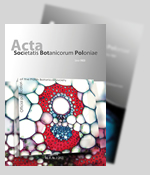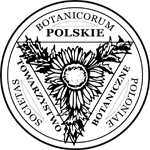Abstract
In the chloroplasts of orchid leaves (Paphiopedilum mastersianum Pfitz., Stanhopea tigrina Batem., Coelogyne cristata LDL and Cymbidium insigne Rolfe) grana stacks differentiate on the base of primary thylakoids. This process occurs by stratification due to overlapping of thylakoids, by their bending and by invagination of the membrane into the thylakoid. There also may form two membranes ending blindly at both ends, called "central contact zone" ("Kontaktzone") in the interior of the mother thylakoid. Thylakoid multiplication in the grana shacks takes place by the same processes; and also by the "overgrowth" of thylakoids over the stroma localized between the closely overlaid grana. The increase in the number of stroma thylakoids usually occurs by fusion of the flattend vesicles lying in rows in the stroma or by elongation of the grana thylakoids.







